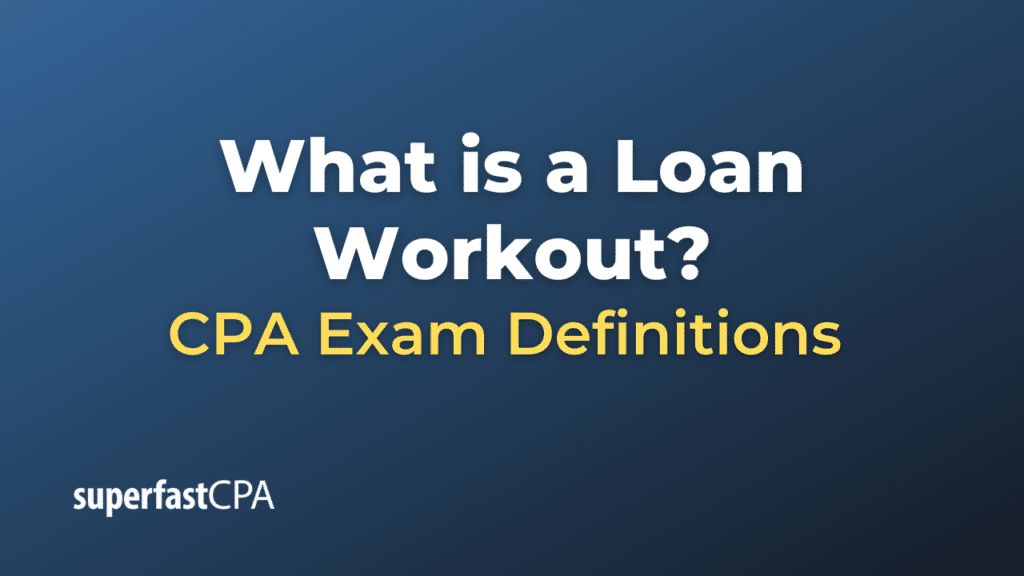Loan Workout
A loan workout is a procedure to restructure a loan that is in default or at risk of default, typically due to the borrower’s inability to continue making scheduled payments. The goal of a loan workout is to modify the loan terms in a way that allows the borrower to continue making payments and avoid foreclosure or bankruptcy, while also minimizing losses for the lender.
Loan workouts can include a variety of possible changes to the original loan terms:
- Loan Modification: This is a permanent change in one or more of the terms of a borrower’s loan. It allows the loan to be reinstated with a payment the borrower can afford. The modification may involve reducing the interest rate, extending the term of the loan, or even reducing the principal balance.
- Forbearance Agreement: This is a temporary agreement to delay foreclosure, allowing the borrower time to catch up on missed payments. The lender may agree to reduce or suspend monthly payments for a certain period, after which the borrower will resume making regular payments, along with extra payments to catch up on the missed amounts.
- Repayment Plan : This is an agreement between the lender and the borrower where the borrower agrees to pay off the past-due amounts over a certain period of time.
- Short Sale or Deed in Lieu of Foreclosure: In these scenarios, the borrower agrees to sell the property and give the proceeds to the lender, even if the sale amount is less than what is owed on the loan, or to transfer the deed of the property directly to the lender. Both methods are alternatives to foreclosure.
These procedures are typically negotiated between the borrower and the lender, often with the assistance of lawyers or financial advisors. It’s important for both sides to understand their rights and obligations under the revised loan terms.
Example of a Loan Workout
John bought a house 5 years ago with a mortgage loan. Due to the current economic climate, John lost his job and is now unable to continue making his monthly mortgage payments.
Seeing his financial distress, the bank that provided the mortgage initiates a loan workout process to avoid a costly and lengthy foreclosure process.
After reviewing John’s financial situation, the bank offers John a loan modification. The original terms of John’s loan were a 6% interest rate with a 30-year term. Under the loan workout agreement, the bank agrees to reduce the interest rate to 4.5% and extend the term of the loan to 40 years. This reduces John’s monthly payment to a level he can afford with his current income, helping him avoid default and foreclosure.
John agrees to the modified loan terms. This way, he can keep his house and continue making payments, albeit at a lower rate and for a longer period. For the bank, it gets to keep receiving payments on the loan, albeit less each month, and avoid the costs associated with foreclosure and selling the property.
Remember, this is just one example of how a loan workout might play out. The specifics would depend on many factors, including the borrower’s financial situation, the type and terms of the loan, and the lender’s policies. Both the borrower and lender must agree to the revised terms for a loan workout to proceed.












